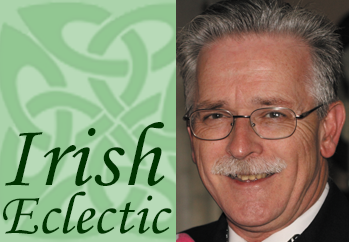Unsung Tales of the Irish Diaspora – South American Style!
Opinion Advocates for ideas and draws conclusions based on the author/producer’s interpretation of facts and data.
 By Brian McGowan
By Brian McGowan
A term often heard today is “The Irish Diaspora.” It refers to the roughly 70 million people living throughout the world today whose ancestors left Ireland over the past several centuries.
Many groups, of course, have their own tales of dispersion. The Irish are not alone. And when we talk of the Irish brand, the ultimate destinations are the United States, Canada, England and Australia. Seldom thought of are the countries of Latin America or the islands of the Caribbean.
To cite one example, consider the following “father and son” tale centered on one of the most illustrious of Irish surnames, that of the O’Higgins.
First, the father, Ambrose O’Higgins, born in County Sligo, Ireland, about 1720. The O’Higgins were a powerful family in the ancient Gaelic aristocracy, before being overturned by Cromwell and English encroachment during the 17th century.
By the time Ambrose was born, his family had been reduced to the status of tenant farmers on an English-owned estate, with little to their names save the memory of former glory. With little opportunity in Ireland, Ambrose left at 30 to work for an Irish-founded trading house in Cadiz, Spain. Five years later, he emigrated to Spanish America. He eventually settled in Argentina, where he became employed as an engineer working for the Spanish Crown.
Spain at this time ruled a vast empire straddling much of South America, most of Central America, as well as Mexico and countless Caribbean islands. Communication between these far-flung colonies was difficult, particularly in South America, where the Andes Mountains effectively blocked any winter mail. O’Higgins, now called Ambrosio, developed an ingenious method to keep communications open through the mountains during the bitter winter months.
Rewarded amply, his talents eventually earned him the position of Governor of Chile, and ultimately, he was named by the Spanish King as 1st Marquess of Osorno. A staunch defender of Spain’s colonial empire, he helped prevent Imperial Russia’s encroachment southward along North America’s Pacific coast, before dying in 1801.
While he was in his 50s, Ambrosio fell in love with Isabel Riquelme, the daughter of a powerful Chilean family. She was four decades his junior. Spanish law at the time prohibited them from marrying, and they never wed. In 1778, when Ambrosio was nearing his 60s, Isabel gave birth to an illegitimate son, Bernardo. Father and son would never meet, and the son would play a major role in upsetting the order of Spanish rule his father had long fought to maintain.
Now, on to the son, Bernardo O’Higgins. Raised by his mother’s family, he was financially supported by his biological father, who ensured that he was well-educated. Schooled in London, Bernardo studied the successful struggle of the United States to attain independence, and wished the same for his own homeland.
Upon his return to Chile at 24, he became embroiled in the Chilean independence movement sparked by Napoleon’s 1808 seizure of Spain. A seesaw struggle ensued between rebels and royalists, and in numerous battles Bernardo displayed extraordinary courage, fortitude and military acumen. Not all his daring exploits were successful, however, and at one point, he was forced to flee to Argentina. Ultimately, he returned to Chile and finally defeated the Spanish royalists.
As the effective ruler of a free Chile, Bernardo made several mistakes that cost him support in key groups who had once been his allies. Deposed in 1823, he escaped on a British ship. He would never see Chile again. He took refuge in neighboring Peru, where he supported Simón Bolivar’s bid for Peruvian independence. He died there in 1842, at the age of 64.
He is recognized today as the most important patriot in Chile’s quest for independence. Commemorated throughout Latin America for his contribution to national sovereignty throughout the Americas, he is fondly recalled in Ireland as well.
Bernardo will not be the only Latin-Irishman we will focus on here. The next will surely raise an eyebrow or two. His first name? Ernesto.
Longtime Pleasantville resident Brian McGowan was born and raised in the Bronx and is a second-, third- and fifth-generation Irish-American/Canadian, as his immigrant ancestors followed several paths to the New World. Reach him at brian.m.mcgowan1952@gmail.com. He is the author of three books: “Thunder at Noon,” about the Battle of Waterloo; “Love, Son John,” about World War II; and “Island Prize,” about the Revolutionary War in 1776 New York. All are available at Amazon.com.

Examiner Media – Keeping you informed with professionally-reported local news, features, and sports coverage.
